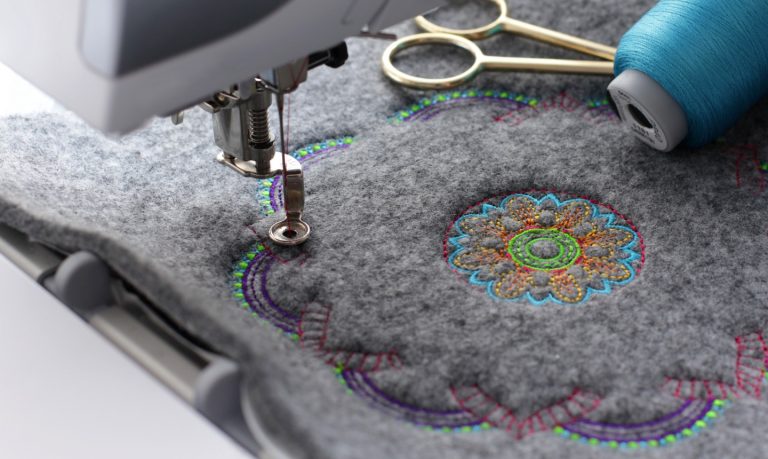Streamlining the Art of Needlework Digitizing: Step-by-Step Guide
As technology continues to advancement, the digitization procedure has become much more accessible, enabling fanatics to bring their elaborate styles to life with simplicity. In this guide, we will untangle the intricacies of needlework digitizing, breaking down each action systematically to simplify the procedure and empower both newbies and experienced embroiderers alike.
Recognizing Embroidery Digitizing Software Program
Needlework digitizing software works as a vital tool for changing elaborate designs right into electronic styles compatible with needlework devices, facilitating specific sewing and modification. This specific software application enables individuals to import various picture data styles, such as JPG or PNG, and convert them into embroidery machine-readable styles like DST, EXP, or PES - Digitizing for Embroidery. By using features like stitch modifying, padding options, and thread shade option, digitizing software program allows users to control every facet of the style procedure
Moreover, progressed needlework digitizing software application supplies devices for creating complex designs, changing stitch density, and incorporating complex information. Individuals can additionally sneak peek the style prior to sewing it out, making certain precision and decreasing mistakes. Furthermore, many software application supply automatic functions that assist improve the digitizing process, saving effort and time.
Recognizing the capabilities of embroidery digitizing software application is crucial for achieving premium cause needlework jobs. By mastering this device, embroidery enthusiasts and professionals can unleash their imagination and bring elaborate layouts to life with precision and performance.

Picking the Right Design Data
After acquainting on your own with the capabilities of needlework digitizing software, the next important step in the procedure is selecting the best design apply for your task. Digitizing for Embroidery. When picking a style apply for needlework digitizing, it's necessary to consider the intricacy of the design, the size of the final item, and the sort of material you will be collaborating with
For detailed styles with great details, a high-resolution photo or vector data is recommended to make sure that the needlework device can properly duplicate the design. Additionally, the size of the end product plays a substantial function in picking the appropriate style data. Bigger layouts might need higher resolution data to maintain clearness and intensity.
Moreover, the sort of textile you will certainly be stitching on influences the selection of design data. Various fabrics may require adjustments in the style data to make sure that the stitches are effectively aligned and the style looks like intended. By very carefully picking the right style file based on these aspects, you can set on your own up for a successful embroidery digitizing process.
Digitizing Devices and Techniques
Using specialized software application and accuracy methods, digitizing devices are important in changing complex layouts right into embroidery-ready files. Embroidery digitizing software application, such as Wilcom, Hatch, or Embrilliance, provides the essential system to convert art work into stitch data. These programs supply features like stitch editing and enhancing, rug choices, and lettering tools to guarantee the style converts effortlessly onto material.
One of the key strategies in digitizing is developing a clear course for the needlework equipment to comply with. This involves digitizing each component of the layout with accuracy, determining stitch kinds, thickness, and instructions. By utilizing tools like digitizing tablet computers or software-specific plugins, embroiderers can attain a high level of precision in their digitized designs.
In addition, understanding the art of padding sewing is crucial for creating top quality embroidery. Underlay stitching learn this here now stabilizes the fabric and produces a foundation for the layout, making sure that the end product is both aesthetically enticing and long-lasting. By recognizing these digitizing devices and methods, embroiderers can raise their craft and bring elaborate styles to life with accuracy and effectiveness.
Tailoring Stitch Kinds and Directions
The option of stitch types can significantly impact the general look and appearance of the embroidered design. By purposefully integrating these stitch types, embroiderers can achieve deepness and measurement in their this post designs.
Furthermore, the direction of stitches plays an important role in improving the aesthetic charm of the final embroidery. Varying stitch directions can add appearance, emphasize details components, and develop visual rate of interest. Changing the angle of stitches can mimic motion or natural patterns like hair or feathers. By explore different stitch angles and patterns, embroiderers can bring their styles to life with impressive detail and details. Understanding the art of personalizing stitch types and instructions encourages embroiderers to release their creative thinking and raise the quality of their work.
Screening and Refining Your Digitized Style
To guarantee the precision and high quality of your digitized design, complete screening and improvement are important actions in the embroidery digitizing process. Once you have actually finished the digitization of your layout, it is important to test it prior to proceeding with the actual embroidery. Evaluating allows you to determine any kind of prospective issues such as thread breaks, sew density troubles, or layout distortions that might affect the outcome.

After testing, it is very important to improve your digitized design based on the responses from the examination sew-out. This may involve tweaking sew settings, changing densities, or making changes to the general design to accomplish the preferred end result. By repeating through testing and improvement, you can tweak your digitized design to look at this web-site excellence before moving onward with the real needlework procedure.
Conclusion
Finally, understanding the art of needlework digitizing calls for a complete understanding of the software application, choosing the right layout data, using digitizing devices and methods, customizing stitch kinds and directions, and screening and fine-tuning the digitized layout. By adhering to these steps, embroiderers can simplify the digitizing process and develop high-grade embroidered styles with precision and effectiveness.